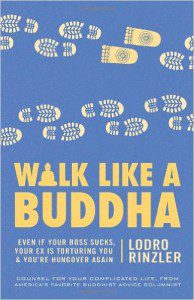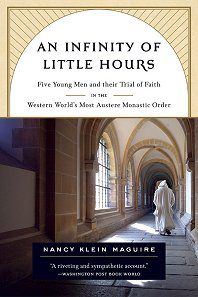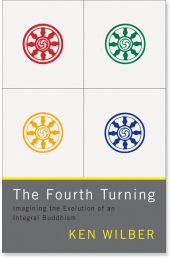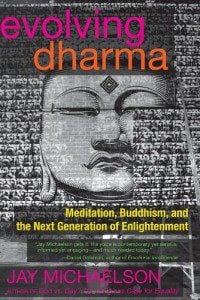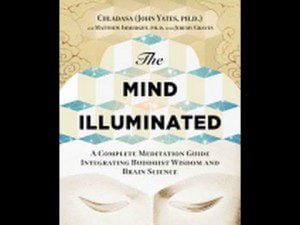 One of my new favorite books is The Mind Illuminated: A Complete Meditation Guide Integrating Buddhist Wisdom and Brain Science by John Yates, a former Ph.D. professor of neuroscience turned full-time meditation teacher under the name Culadasa (xi). What he does especially well is translate the traditional stages on the path to Buddhist Awakening into a clear, user-friendly manual with many helpful illustrations.
One of my new favorite books is The Mind Illuminated: A Complete Meditation Guide Integrating Buddhist Wisdom and Brain Science by John Yates, a former Ph.D. professor of neuroscience turned full-time meditation teacher under the name Culadasa (xi). What he does especially well is translate the traditional stages on the path to Buddhist Awakening into a clear, user-friendly manual with many helpful illustrations.
For each of the ten stages, there is an emphasis on best practices for that phase of your development. And although the book is almost five hundred pages long, you would need to read less than a hundred pages to cover the basic overview and the tips for the first few stages toward Buddhist Awakening.
Despite common misunderstandings, it’s important to emphasize that Buddhist Awakening is not about becoming perfect in all aspects of your life; rather, it is about experientially understanding certain aspects about the nature of reality. And those particular Buddhist insights about impermanence, interconnectedness, and the cessation of suffering are most likely to happen when the mind is in a state of tranquility. So all that time you are spending on your meditation cushion is about building the skills of concentration and mindfulness necessary to reach the tranquil state of mind needed to have insight into the nature of reality as it actually is (xix).
Now, here’s a twist: many popular mindfulness programs today do not talk about all that becomes possible at advanced stages of meditation. Rather, they seek to use a stripped down, selective version of Buddhism (sometimes called “McMindfulness”) to lower stress, strengthen focus, and increase productivity. All of those are potentially worthy goals, but it is interesting to note that one could practice McMindfulness for decades, get some real benefit from the practice, but never move out of stage two or three from a more traditional Buddhist perspective.
To trace a few of the highlights of the stages of insight, Stage One is simply about establishing a regular daily practice of at least twenty minutes a day—and ideally forty-five minutes a day—which is not an easy feat. (I would add that if you are finding yourself regularly experiencing the common problem of falling asleep during meditation, “Stage Zero” in your practice may be getting more sleep each night as a staging ground for pursuing the Buddhist path.)
Stage Two focuses on how to shorten the frequency of mind-wandering during meditation and how to sustain your attention on the breath. And one of the best tips I could pass along here is to be gentle with yourself when distractions inevitably arise. Instead of beating yourself up internally, simply note the distraction compassionately, practice gently letting it go, and return your attention to your breath.
As you continue to progress,
You have mastered Stage Three when forgetting and mind-wandering no longer occur, and the breath stays continually in conscious awareness…. The mind still roams, but it’s “tethered” to the meditation object, never getting too far away; the unconscious mental processes that sustain attention never entirely let go of the meditation object. Because attention no longer shifts automatically to objects of desire and aversion, you can purposely hold your attention on an emotionally neutral object like the breath for extended periods of time. (111)
“Continuous Attention to the Meditation Object” is the first of four traditional milestones on the path to Awakening, and it is the transition point from being a Novice Meditator to becoming a Skilled Meditator. The other three milestones are “Sustained Exclusive Focus of Attention,” “Effortless Stability of Attention,” and “Persistence of the Mental Qualities of Tranquility and Equanimity.”
What I most appreciate about Culadasa and other practitioners of what is sometimes called Pragmatic Buddhism is the emphasis that Buddhist Awakening is attainable not only by cloistered monks, but also by everyday people who work demanding jobs and have families. However, it does take time and commitment.
To give you a few parallel examples (and I would encourage you to relatedly think of similar examples in your own life), I find it pretty easy to run four miles twice/week with a third, longer run once/week. I’ve also successfully trained for a both a half marathon and a Sprint Triathlon. But I’ve failed twice in training for an Olympic Distance Triathlon. Both times, the twice/day trainings started taking up more time and energy than I was willing to expend about halfway through the four-month training period. I could have continued, but chose other priorities.
Similarly, I am a pretty good guitar player and semi-passable pianist. But my progress plateaued on each instrument in high school, when I was unwilling to keep ratcheting up the required periods of practice needed to improve. When the needed thirty minutes/day became an hour/day — with a projected 90 minutes to two-hours a day soon-to-be needed, I hit the eject button. That being said, I conversely want to emphasize how much is possible if you do choose to spend an hour a day on something you are passionate about, coupled with a weekly time of more intensive practice, and occasional (or annual) retreats of a week or more. And I’m not only talking about Buddhism. Your interest may be athletic or artistic, scholarly or pure fun. My point is to recognize the power of sustained commitment over a long period of time in the same direction.
Tolstoy’s War and Peace may be 1,200 pages, but if you read only 10 pages/day, you can finish it in four months. Likewise, progressing on the path toward mental tranquility and emotional equanimity is possible. When I meditate, I do sometimes wish that the timer would go-ahead-and-ring-already, so that I can go on to the next task in my schedule. But especially in our 24/7 world of constant connectivity, there are also times I look forward to meditation as a time to practice letting go of control and simply experience reality as it is with the arising and passing away of each next present moment. (I’ll also add that if sitting down for 45 minutes of counting your breath seems impossible, I recommend more active forms of contemplation such as Tai Chi, yoga, or walking the labyrinth.)
As one of my mentors used to say, “Practice may not make perfect, but it does make permanent”: whatever we practice becomes increasingly second nature to us. Practicing meditation literally changes your mind. In that spirit, may you be filled with loving-kindness. May you be peaceful and at ease. May you be well.
The Rev. Dr. Carl Gregg is a trained spiritual director, a D.Min. graduate of San Francisco Theological Seminary, and the minister of the Unitarian Universalist Congregation of Frederick, Maryland. Follow him on Facebook (facebook.com/carlgregg) and Twitter (@carlgregg).
Learn more about Unitarian Universalism: http://www.uua.org/beliefs/principles



